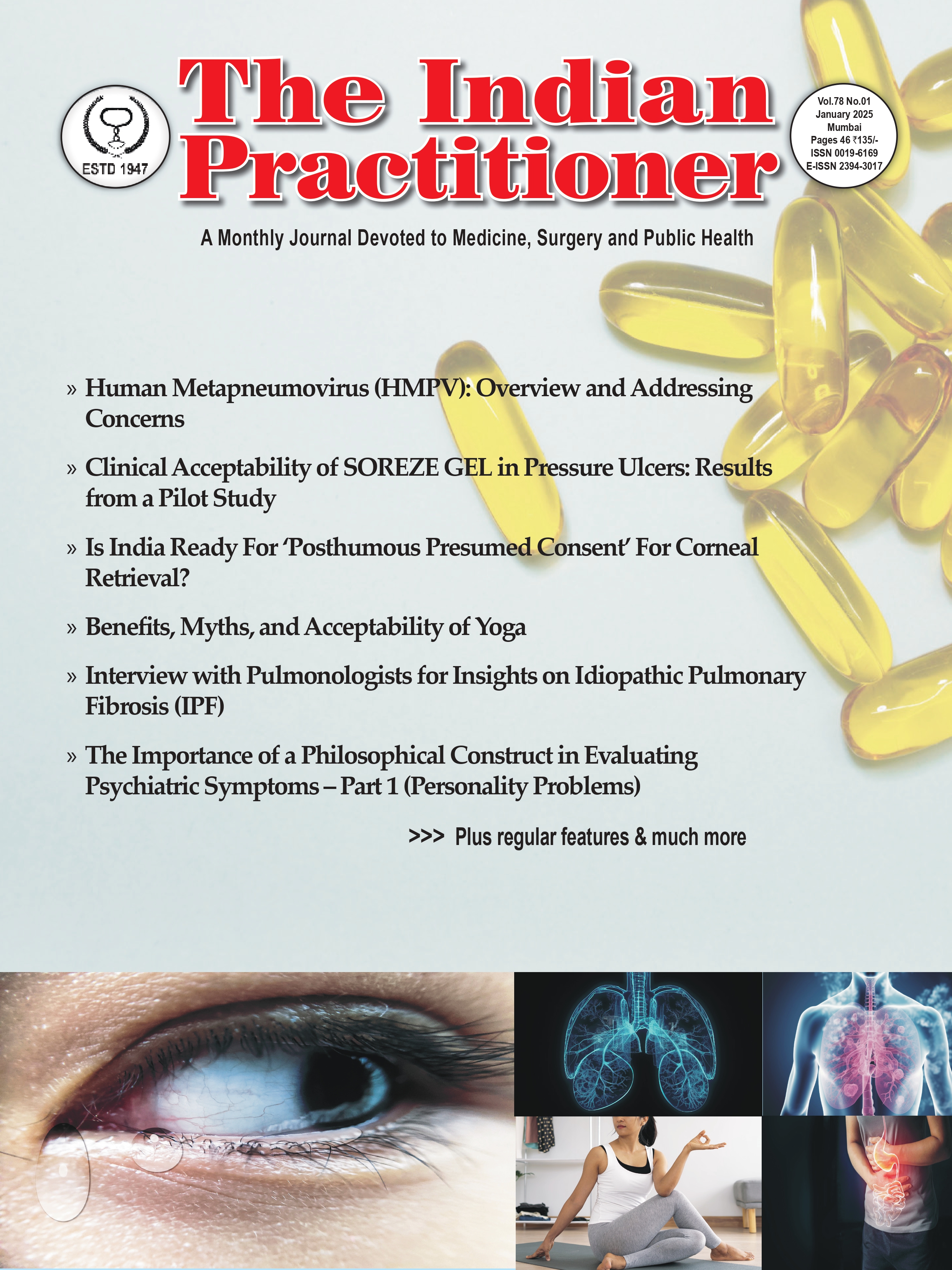Clinical acceptability of SOREZE GEL in Pressure Ulcers: Results from a Pilot Study
Abstract
Introduction: Pressure ulcers (PU), commonly addressed as ‘bed sores’, are a considerable burden of disease and have been one of the important causes of morbidity and mortality among elderly patients. Methods: In a pilot study comprising 21 days, an innovative barrier-film-forming gel (SOREZE ® gel) was used on patients with varying degrees of severity of multiple pressure ulcers. This novel skin protectant gel contains silicone elastomers, polysiloxane, and starch using patented EPB (Elastomer Potentiated Barrier) technology that forms a protective film. Results: In this study, twice daily application was safe and effective. The mean total Braden score across all subjects was 15.8 at baseline and increased to 16.2 at the end of this treatment. There was a reduction in pain with a change in baseline VAS score from 3.15 to 2.92 at the end of the 21-day application. No adverse events were reported during the entire study period. None of the patients reported any hypersensitive skin reactions. No new pressure ulcers were formed and none of the subjects deteriorated during the 21-day application period.
Conclusion: The pilot experiment results demonstrated some improvement in pressure ulcers and prevention of pressure ulcers, as new pressure ulcers did not occur in the sensitive areas using SOREZE gel.
References
2. Mervis JS, Phillips TJ. Pressure ulcers: Pathophysiology, epidemiology, risk factors, and presentation. J Am Acad Dermatol. 2019;81(4):881-890.
3. Yu B, Kang SY, Akthakul A, Ramadurai N, Pilkenton M, Patel A. et al. Pressure Ulcer. [Updated 2024 Jan 3]. In: StatPearls [Internet]. Treasure Island (FL): StatPearls Publishing; 2024 Jan-Available from: https://www.ncbi.nlm.nih.gov/books/NBK553107/
4. Bansal C, Scott R, Stewart D, Cockerell CJ. Decubitus ulcers: A review of the literature. Int J Dermatol. 2005;44(10):805-10.
5. Kaur S, Singh A, Dhillon MS, Tewari MK, SekhonPK. Incidence of Bedsore among the admitted Patients in a Tertiary Care Hospital. Journal of Postgraduate Medicine, Education and Research 2015;49:26-31.
6. Kottner J, Cuddigan J, Carville K, Balzer K, Berlowitz D, Law S, et al. Pressure ulcer/injury classification today: An international perspective. J Tissue Viability. 2020;29(3):197-203.
7. Claudia G, Diane M, Daphney SG, Danièle D. Prevention and treatment of pressure ulcers in a university hospital centre: A correlational study examining nurses' knowledge and best practice. Int J Nurs Pract. 2010;16:183–7.
8. Stinson M, Gillan C, Porter-Armstrong A. A Literature Review of Pressure Ulcer Prevention: Weight Shift Activity, Cost of Pressure Care and Role of the Occupational Therapist. British Journal of Occupational Therapy. 2013;76(4):169-178.
9. Keller PB, Wille J, van Ramshorst B, van der Werken C. Pressure ulcers in intensive care patients: A review of risks and prevention. Intensive Care Med. 2002;28:1379–88.
10. Roussou E, Fasoi G, Stavropoulou A, Kelesi M, Vasilopoulos G, Gerogianni G, et al. Quality of life of patients with pressure ulcers: a systematic review. Med Pharm Rep. 2023;96(2):123-130.
11. Afzali Borojeny L, Albatineh AN, Hasanpour Dehkordi A, Ghanei Gheshlagh R. The Incidence of Pressure Ulcers and its Associations in Different Wards of the Hospital: A Systematic Review and Meta-Analysis. Int J Prev Med. 2020;11:171.
12. Boyko TV, Longaker MT, Yang GP. Review of the Current Management of Pressure Ulcers. Adv Wound Care (New Rochelle). 2018;7(2):57-67.
13. Kennerly SM, Sharkey PD, Horn SD, Alderden J, Yap TL. Nursing Assessment of Pressure Injury Risk with the Braden Scale Validated against Sensor-Based Measurement of Movement. Healthcare (Basel). 2022 Nov 21;10(11):2330.
14. Anders J, Heinemann A, Leffmann C, Leutenegger M, Pröfener F, von Renteln-Kruse W. Decubitus ulcers: pathophysiology and primary prevention. Dtsch Arztebl Int. 2010;107(21):371-382.
15. Chou R, Dana T, Bougatsos C, Blazina I, Starmer AJ, Reitel K, et al. Pressure ulcer risk assessment and prevention: a systematic comparative effectiveness review. Ann Intern Med. 2013 Jul 02;159(1):28-38.
16. Frederiksen K., Guy R.H., Petersson K. The potential of polymeric film-forming systems as sustained delivery platforms for topical drugs. Expert Opin. Drug Deliv. 2016;13:349–360.
17. de Oliveira F.F.D, Menezes L, Tavares M.I.B. Film-Forming Systems in Topically Administered Pharmaceutical Formulations. Mater. Sci. Appl. 2020;11:576–590
18. Kathe K, Kathpalia H. Film forming systems for topical and transdermal drug delivery. Asian J Pharm Sci. 2017 Nov;12(6):487-497.
19. Pünnel LC, Lunter DJ. Film-Forming Systems for Dermal Drug Delivery. Pharmaceutics. 2021;13(7):932.
20. Roaf, R. (1976). The Causation and Prevention of Bed Sores. In: Kenedi, R.M., Cowden, J.M. (eds) Bed Sore Biomechanics. Strathclyde Bioengineering Seminars. Palgrave, London. Available from https://doi.org/10.1007/978-1-349-02492-6_2


